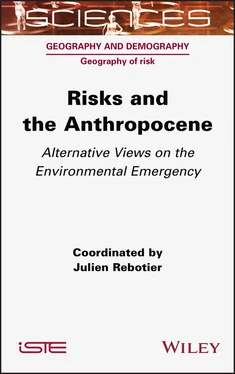5 Foreword
6 Introduction
7 Begin Reading
8 Conclusion
9 List of Authors
10 Index
11 End User License Agreement
1 v
2 iii
3 iv
4 xi
5 xii
6 xiii
7 xiv
8 xv
9 xvi
10 xvii
11 xviii
12 xix
13 xx
14 xxi
15 xxii
16 xxiii
17 xxiv
18 xxv
19 xxvi
20 xxvii
21 xxviii
22 xxix
23 xxx
24 xxxi
25 xxxii
26 xxxiii
27 xxxiv
28 xxxv
29 xxxvi
30 xxxvii
31 xxxviii
32 1
33 2
34 3
35 4
36 5
37 6
38 7
39 8
40 9
41 10
42 11
43 12
44 13
45 14
46 15
47 16
48 17
49 18
50 19
51 20
52 21
53 22
54 23
55 24
56 25
57 26
58 27
59 28
60 29
61 30
62 31
63 32
64 33
65 34
66 35
67 36
68 37
69 38
70 39
71 40
72 41
73 42
74 43
75 44
76 45
77 46
78 47
79 48
80 49
81 50
82 51
83 52
84 53
85 54
86 55
87 56
88 57
89 58
90 59
91 60
92 61
93 62
94 63
95 64
96 65
97 66
98 67
99 68
100 69
101 70
102 71
103 72
104 73
105 74
106 75
107 76
108 77
109 78
110 79
111 80
112 81
113 82
114 83
115 84
116 85
117 86
118 87
119 88
120 89
121 90
122 91
123 92
124 93
125 94
126 95
127 96
128 97
129 98
130 99
131 100
132 101
133 102
134 103
135 104
136 105
137 106
138 107
139 108
140 109
141 110
142 111
143 112
144 113
145 114
146 115
147 116
148 117
149 118
150 119
151 120
152 121
153 122
154 123
155 124
156 125
157 126
158 127
159 128
160 129
161 130
162 131
163 132
164 133
165 134
166 135
167 136
168 137
169 138
170 139
171 140
172 141
173 142
174 143
175 144
176 145
177 146
178 147
179 148
180 149
181 150
182 151
183 152
184 153
185 154
186 155
187 156
188 157
189 158
190 159
191 160
192 161
193 162
194 163
195 164
196 165
197 166
198 167
199 168
200 169
201 170
202 171
203 172
204 173
205 174
206 175
207 176
208 177
209 178
210 179
211 180
212 181
213 182
214 183
215 184
216 185
217 186
218 187
219 188
220 189
221 190
222 191
223 192
224 193
225 194
226 195
227 196
228 197
229 198
230 199
231 200
232 201
233 202
234 203
235 204
236 205
237 206
238 207
239 208
240 209
241 210
242 211
243 212
244 213
245 214
246 215
247 216
248 217
249 218
250 219
251 220
252 221
253 222
254 223
SCIENCES
Geography and Demography , Field Director – Denise Pumain
Geography of Risk , Subject Head – Samuel Rufat
Risks and the Anthropocene
Alternative Views on the Environmental Emergency
Coordinated by Julien Rebotier

First published 2021 in Great Britain and the United States by ISTE Ltd and John Wiley & Sons, Inc.
Apart from any fair dealing for the purposes of research or private study, or criticism or review, as permitted under the Copyright, Designs and Patents Act 1988, this publication may only be reproduced, stored or transmitted, in any form or by any means, with the prior permission in writing of the publishers, or in the case of reprographic reproduction in accordance with the terms and licenses issued by the CLA. Enquiries concerning reproduction outside these terms should be sent to the publishers at the undermentioned address:
ISTE Ltd
27-37 St George’s Road
London SW19 4EU
UK
www.iste.co.uk
John Wiley & Sons, Inc.
111 River Street
Hoboken, NJ 07030
USA
www.wiley.com
© ISTE Ltd 2021
The rights of Julien Rebotier to be identified as the author of this work have been asserted by him in accordance with the Copyright, Designs and Patents Act 1988.
Library of Congress Control Number: 2021945744
British Library Cataloguing-in-Publication Data
A CIP record for this book is available from the British Library
ISBN 978-1-78945-041-5
ERC code:
SH2 Institutions, Values, Environment and Space
SH2_7 Environmental and climate change, societal impact and policy
SH2_11 Human, economic and social geography
Foreword
Risks and the Anthropocene: A Look at the Environmental Emergency
Samuel RUFAT
Institut universitaire de France, Paris, France
Since 1980, more than 1.5 billion people have died in disasters and the UN estimates that annual damages will exceed $400 billion by 2030. Global trends of increasing exposure, high inequality, rapid urban development and worsening environmental degradation raise concerns that risk levels are becoming an impediment to sustainable development. In this context, the “migration” of the notion of the Anthropocene from the earth sciences to the social sciences has led to both hopes and controversies while polarizing attention around environmental emergencies. Are we witnessing a renewal, a refoundation or a refutation of knowledge, practices and levers of action around risks and catastrophes?
With regard to “Geography of risk”, books on this theme take stock of the renewal of concepts, approaches, issues and tools at the interface between risks, societies and the environment, because risks do not always translate into disasters and the increase in risks is not inevitable. It is possible to reduce the exposure of populations, to reduce their vulnerabilities, to support their adaptation or to support the resilience of societies in the face of risks that cannot be reduced or shared. Risk prevention, disaster reduction and mitigation of their effects require interdisciplinary approaches, in a subtle balance between the social demand for coordinated action at all levels and the imperative of reflexive criticism, in order to deal with the substance of the problems rather than the most visible symptoms or the most fashionable solutions. This book shows that, like other such notions. “The Anthropocene, even if it is deconstructed and criticized by the social sciences, seems to function as a performative category (which tends to impose a conception of the world), more than as a heuristic category (which allows meanings to emerge around conceptions and relationships to the world)”.
While scientists’ calls to action on disasters and climate are ancient and necessary, the call to the social sciences themselves remains fundamental. This book examines the shift toward the “social sciences of the Anthropocene” by showing that the imperatives of the emergency and action are engulfed in a constant deficit of reflexivity. Julien Rebotier has brought together a multidisciplinary team of French-speaking specialists, researchers and teachers, to put their expertise into dialogue. The authors offer a critical analysis of the links between risks, the Anthropocene and environmental emergencies, without glossing over the controversies and the political and ethical issues. They show in a fine way how the emphasis on climate, earth or life sciences, when social sciences are not audible in environmental research, tends to orient both the questions and the answers in a way that is not neutral: “The environmental emergency and the thinking of the whole deny the less fortunate their very status as dominated and lock them into a double punishment: they are both the most vulnerable and those whose voice counts the least (or for whom we speak the most)”.
Читать дальше













